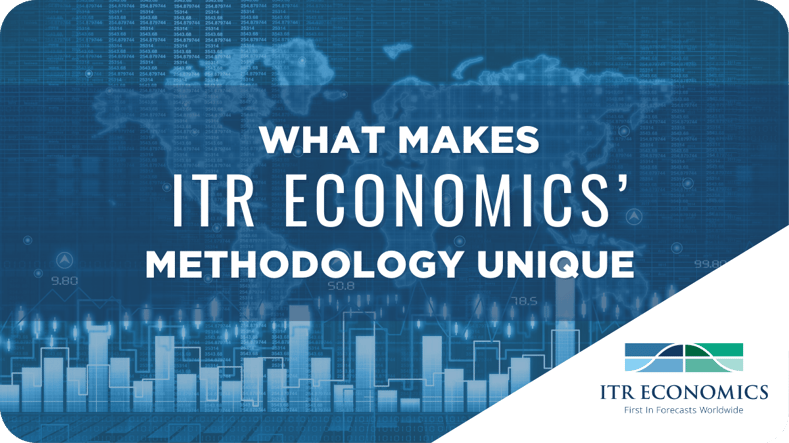
Why Use Leading Indicators to Plan Ahead?
Using accurate forecasts to inform your business strategy is a fantastic way to eliminate unnecessary risks to your company and make the most of future opportunities. But, as a business leader, you have options as to who you work with and where you get your forecasts from.
Partnering with ITR Economics is a great option; we are the oldest privately held, continuously operating economic research and consulting firm in the US, and we have an overall forecast accuracy rating of 94.7%. However, businesses often opt to start their forecasting strategies on their own. If you are such a business, we highly recommend you consider using rates-of-change and leading indicator analysis as part of your forecasting process.
Business Cycles
At ITR Economics, what we do is just as important as how we do it. Unique to ITR Economics is our business cycle theory forecasting methods. But there are also steps you as a business leader can take to start exploring this world of business cycles.
The business cycle is divided into four phases:
- Phase A, Recovery
- Phase B, Accelerating Growth
- Phase C, Slowing Growth
- Phase D, Recession
These phases are based on ITR Economics’ rate-of-change methodology, which enables us to know both when and how best to implement strategic decisions based on the performance of the company, its markets, and the overall industry.
ITR Economics Trends 10 Summary
Chart published June 9, 2023


Linear forecasting is commonly used, but ITR Economics is different. Because economic trends are not linear, we strongly recommend the use of rates-of-change to understand the business cycle. With linear forecasting, you will miss the cyclical turning points, which could in turn lead you to miss opportunities or, in some cases, overextend your business.
With business cycle forecasting, you see not only the upcoming cyclical highs and lows, but also everything that will occur in between. This detailed foresight of the upcoming highs and lows, as well as growth and decline, gives you a clear road map from which you will be able to accurately plan your investment strategy.
Rates-of-Change
As mentioned before, we can find your company’s place in the business cycle with our rate-of-change calculations. Rates-of-change also help us identify the next business cycle phase you will enter.
By knowing ahead of time whether your company will see significant growth or face a recession, you can effectively plan and prepare for what is coming down the line.
Calculating the rates-of-change for your business does not involve a secret formula only known by ITR economists. We encourage all our clients to learn everything they can about rates-of-change! Below is a helpful guide to get you started with ITR Economist and Speaker Lauren Saidel-Baker.
Leading Indicators
One of the best ways to see the future for your business and improve your-decision making is by utilizing leading indicators. A leading indicator is any sort of economic indicator that has a leading relationship to the subject series – such as your sales – of your analysis.
Sorting through thousands of leading indicators to identify those that best relate to your data can be a difficult undertaking when done alone. With programs such as DataCast Pro™, our expert economists work closely with you to find the best-fit leading indicators for your data.
Once we identify these indicators together, we establish the timing relationship between the indicator and your dataset. By knowing the lead time of the indicator relative to your data, we can determine a projected path for your business, which includes a clear visual representation that is easy to understand and implement into your plans.
We are excited to partner with The Great Game of Business in the mini game leading up to this year’s conference! A helpful hint: if you start using rates-of-change and leading indicator analysis today, you will have a better shot at making the best guess at the conference! For more information about economic forecasting, feel free to contact us any time.
The Great Game of Business is a proud partner of ITR Economics! As part of this partnership, ITR Economics provides access to exclusive discounts on their subscription services. Use code "GGOB" for 10% off our online offerings, include the ITR Trends Report™, DataCast Essentials™, Executive Series webinars, and your first month of an ITR Insider™ membership.
Want to learn more about The Great Game of Business and how open-book management could benefit your organization?
Download our original book or get started with a free chapter.

Other items you might like:
.png)










.png)




-5.png)

